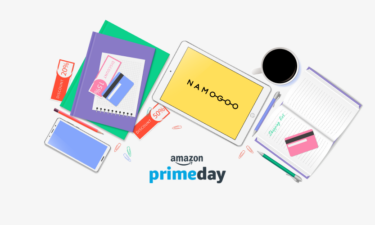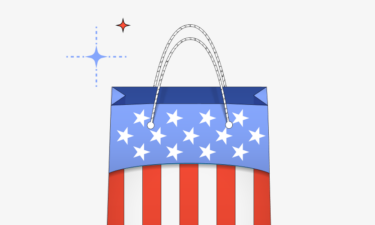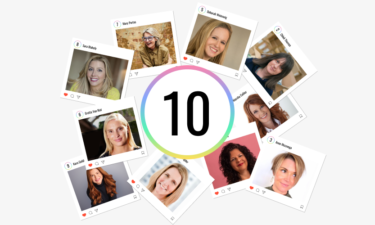What Is Social Commerce All About?
The word on the street is that social commerce is the future of marketing and shopping online. Hootsuite describes it as the process of selling products directly on social media. The entire shopping experience – from product discovery and research to the checkout process – takes place on a social media platform. This process differs from social media marketing where users are directed to an online store.
Social commerce is a massive $89.4 billion market right now, and projected to grow to $604 billion by 2027.
Over the past year, online shopping has exploded, with the pandemic impacting how we choose to shop. Social platforms have had to adapt their technology to meet users’ high demands, making the online shopping experience a seamless one.
See it. Click it. Buy it.
Social commerce removes friction from the consumer journey, making it super easy to follow through from discovery to purchase. It also makes sense to bring your goods to the online spaces where your customers are already hanging out.
Insider Intelligence forecasts that US retail social commerce sales will rise by 35.8% to $36.62 billion in 2021, with fashion categories including apparel and accessories remaining the key players. Other lifestyle brands looking to market electronics and home decor come in at a close second. Brands featuring new and differentiated products are also best suited for the social commerce space.
According to Social Media Today, while eCommerce was already seeing a steady increase in adoption, the pandemic accelerated that shift by around five years. Over the past 18 months due to the pandemic, social platforms have had to step up their eCommerce game, with virtually every platform exploring different forms of in-stream product discovery and purchase.

Source: Social Media Today
Where Millennials and Gen Zers Shop
In the US, more than a third of internet users aged between 18 and 34 have already bought something via social media, with the average value of online orders at just over $79. It makes sense to target a demographic that’s already online and waiting to shop while they scroll different social media feeds.
This is why brands need to leverage social media checkout and shopping integrations as tech-savvy Millennials and Gen Z’ers, familiar with and motivated by influencer endorsed content, engage with social commerce more often. Through social media platforms, brands can help consumers with product discovery, gain insight into what their audience is talking about and be honest about their likes and dislikes.
Social Commerce Platforms
Top social media platforms helping brands leverage social commerce include Facebook, Instagram, Pinterest, TikTok, and Twitter. Facebook is the top social commerce platform in the US, with a whopping 56.1 million buyers in 2021.
May 2020 saw Facebook announce the rollout of shops on a business’ Facebook page or Instagram profile, where users get to browse the product selection and place an order without leaving the app (If the business has enabled checkout in the US). Facebook Shops also allows you to connect with customers across other Facebook platforms such as WhatsApp, Messenger, or Instagram to answer questions or offer support.
In 2020, Instagram also took their shoppable content a step further by placing the shop icon tab at the bottom of the homepage, prompting users to click on the icon and instantly see and purchase products advertised by brands, influencers or celebs they follow. This ties into influencer culture, making it a top player in the social commerce space.
TikTok
With influencer marketing continuing to boom, TikTok has announced plans to expand into US eCommerce this year by allowing influencers to post links to products and earn sales commissions.
Harley Finkelstein, Shopify President, says that social commerce is the next frontier for entrepreneurship, with Shopify rolling out commerce to TikTok in August 2021. Users in the US, UK, and Canada will be able to shop from their favorite creators and brands while on the platform. Social commerce is also one of the fastest-growing channels for Shopify merchants, especially as more creators rely on these platforms to build their businesses. Shopify wants to help creators and brands meet people where they are spending time. The hashtag #TikTokMadeMeBuyIt has a whopping 4.6 billion views and Shopify is leading the social commerce conversation with a visionary partner like TikTok.
Essentially, creators and brands can share their products in an organic way, tag their products in TikTok posts, and their audience can shop the products in-app via Shopify. Entrepreneurs will be able to convert fans and followers into customers, seamlessly blending content, community, and commerce.
Pinterest’s latest social commerce update gives influencers the ability to add shopping links within its Instagram stories-style Idea Pins post format. As of July 27, Pinterest creators can disclose paid partnerships and add tags to featured products that are in the platform’s product catalog, which was expanded by a partnership with Shopify in April 2021.
Twitter also wants in on the action and started testing new strategies in early 2021, to integrate online shopping and user experiences on the app. In July 2021, Twitter rolled out a robust eCommerce test: The Shop Module, which will allow brands to display products in a carousel format at the top of the profile. When a user visits a brand’s Twitter account, they will be able to scroll through a handful of products, tap in to learn more about each one, and eventually purchase.

Source: Twitter
Social Commerce= Big Business for Brands
High-end jewelry designer, David Yurman, drives direct sales with the #TapToShop hashtag on his Instagram posts, prompting users to buy directly within the app.

Source: Instagram
Gunner Kennels combines video with social commerce on Facebook, prompting users with a “shop now” call-to-action to purchase within the Facebook environment.

Source: Gunner Kennels
Target focuses on items that align with its Instagram content strategy, creating a better browsing experience for its established Instagram audience.

Convert Customers Where They Are
Social commerce allows brands to explore new ways to engage and interact with their customers post-pandemic.
We’re looking forward to seeing more businesses play in this social marketplace which not only covers the entire online shopping journey in one single place, from discovery to transaction, but lowers frictions and makes it much easier for shoppers to purchase.
What’s certain is that if you’re a brand or retailer, this is a mega-trend you need to start exploring right now.







